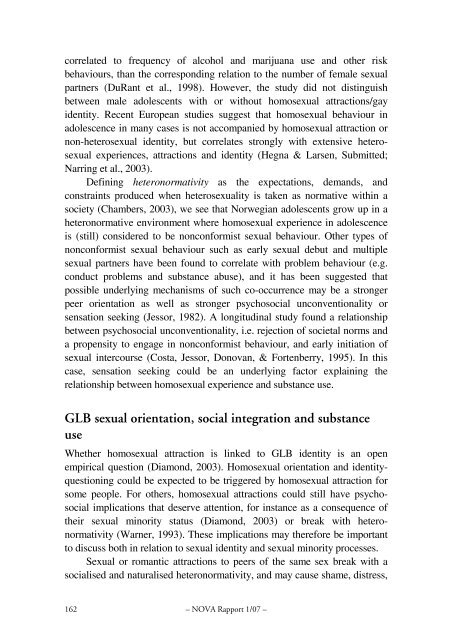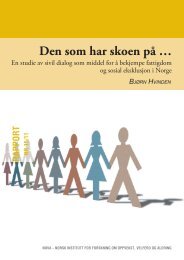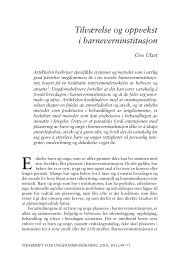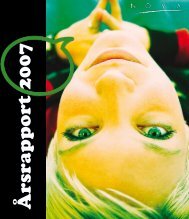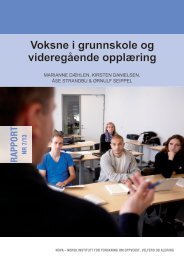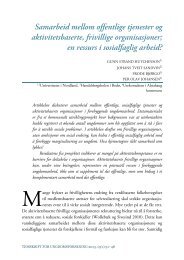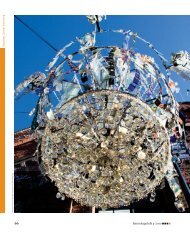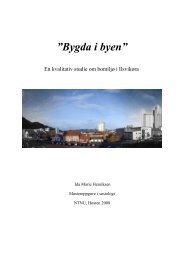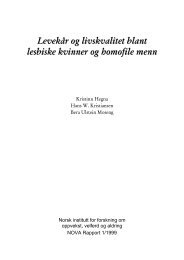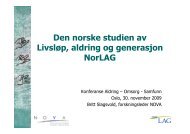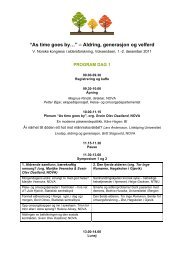Betydningen av seksuell erfaring, tiltrekning og identitet for ...
Betydningen av seksuell erfaring, tiltrekning og identitet for ...
Betydningen av seksuell erfaring, tiltrekning og identitet for ...
You also want an ePaper? Increase the reach of your titles
YUMPU automatically turns print PDFs into web optimized ePapers that Google loves.
correlated to frequency of alcohol and marijuana use and other risk<br />
beh<strong>av</strong>iours, than the corresponding relation to the number of female sexual<br />
partners (DuRant et al., 1998). However, the study did not distinguish<br />
between male adolescents with or without homosexual attractions/gay<br />
identity. Recent European studies suggest that homosexual beh<strong>av</strong>iour in<br />
adolescence in many cases is not accompanied by homosexual attraction or<br />
non-heterosexual identity, but correlates strongly with extensive heterosexual<br />
experiences, attractions and identity (Hegna & Larsen, Submitted;<br />
Narring et al., 2003).<br />
Defining heteronormativity as the expectations, demands, and<br />
constraints produced when heterosexuality is taken as normative within a<br />
society (Chambers, 2003), we see that Norwegian adolescents grow up in a<br />
heteronormative environment where homosexual experience in adolescence<br />
is (still) considered to be noncon<strong>for</strong>mist sexual beh<strong>av</strong>iour. Other types of<br />
noncon<strong>for</strong>mist sexual beh<strong>av</strong>iour such as early sexual debut and multiple<br />
sexual partners h<strong>av</strong>e been found to correlate with problem beh<strong>av</strong>iour (e.g.<br />
conduct problems and substance abuse), and it has been suggested that<br />
possible underlying mechanisms of such co-occurrence may be a stronger<br />
peer orientation as well as stronger psychosocial unconventionality or<br />
sensation seeking (Jessor, 1982). A longitudinal study found a relationship<br />
between psychosocial unconventionality, i.e. rejection of societal norms and<br />
a propensity to engage in noncon<strong>for</strong>mist beh<strong>av</strong>iour, and early initiation of<br />
sexual intercourse (Costa, Jessor, Donovan, & Fortenberry, 1995). In this<br />
case, sensation seeking could be an underlying factor explaining the<br />
relationship between homosexual experience and substance use.<br />
GLB sexual orientation, social integration and substance<br />
use<br />
Whether homosexual attraction is linked to GLB identity is an open<br />
empirical question (Diamond, 2003). Homosexual orientation and identityquestioning<br />
could be expected to be triggered by homosexual attraction <strong>for</strong><br />
some people. For others, homosexual attractions could still h<strong>av</strong>e psychosocial<br />
implications that deserve attention, <strong>for</strong> instance as a consequence of<br />
their sexual minority status (Diamond, 2003) or break with heteronormativity<br />
(Warner, 1993). These implications may there<strong>for</strong>e be important<br />
to discuss both in relation to sexual identity and sexual minority processes.<br />
Sexual or romantic attractions to peers of the same sex break with a<br />
socialised and naturalised heteronormativity, and may cause shame, distress,<br />
162<br />
– NOVA Rapport 1/07 –


